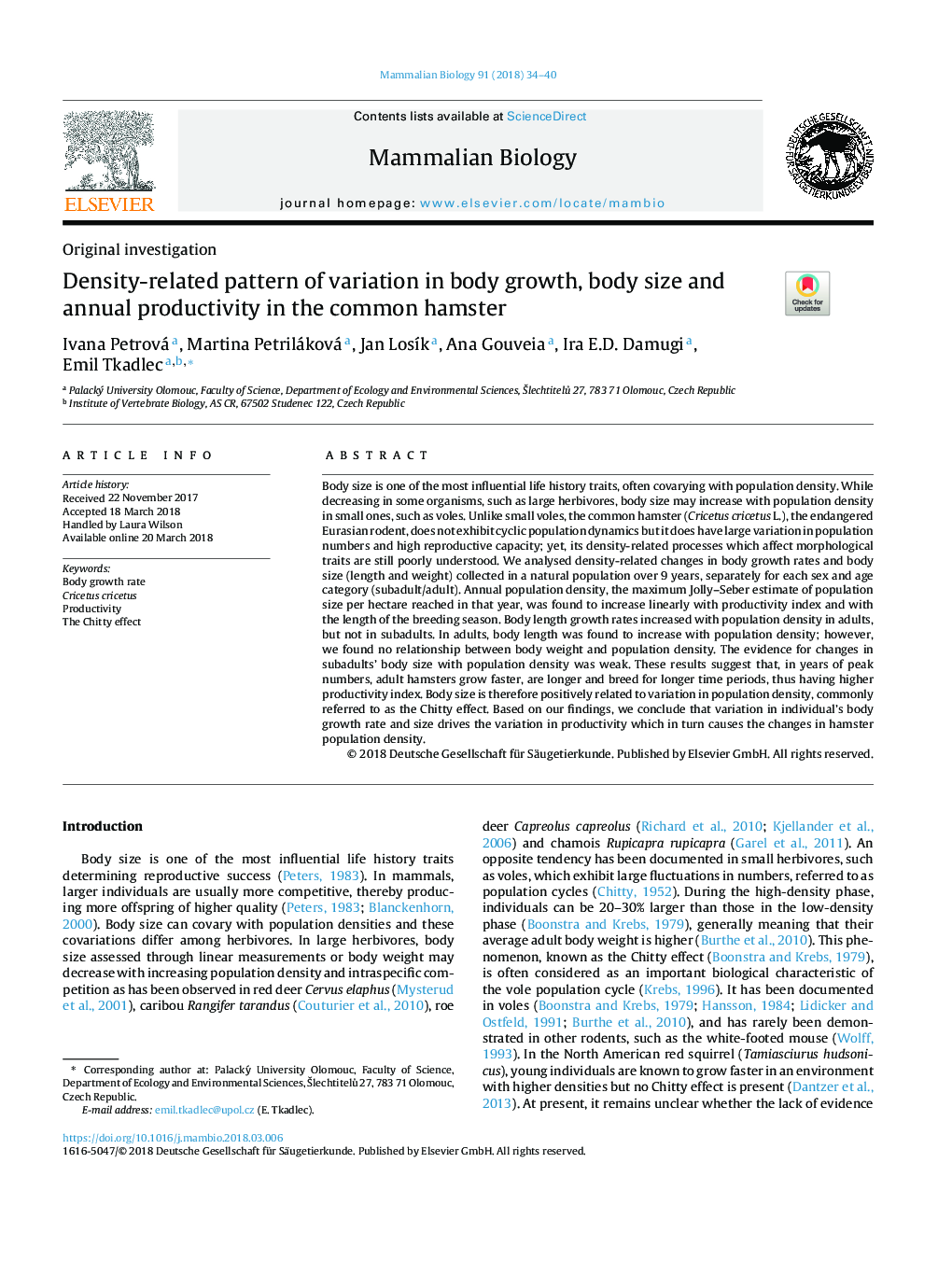| Article ID | Journal | Published Year | Pages | File Type |
|---|---|---|---|---|
| 8475579 | Mammalian Biology - Zeitschrift für Säugetierkunde | 2018 | 7 Pages |
Abstract
Body size is one of the most influential life history traits, often covarying with population density. While decreasing in some organisms, such as large herbivores, body size may increase with population density in small ones, such as voles. Unlike small voles, the common hamster (Cricetus cricetus L.), the endangered Eurasian rodent, does not exhibit cyclic population dynamics but it does have large variation in population numbers and high reproductive capacity; yet, its density-related processes which affect morphological traits are still poorly understood. We analysed density-related changes in body growth rates and body size (length and weight) collected in a natural population over 9 years, separately for each sex and age category (subadult/adult). Annual population density, the maximum Jolly-Seber estimate of population size per hectare reached in that year, was found to increase linearly with productivity index and with the length of the breeding season. Body length growth rates increased with population density in adults, but not in subadults. In adults, body length was found to increase with population density; however, we found no relationship between body weight and population density. The evidence for changes in subadults' body size with population density was weak. These results suggest that, in years of peak numbers, adult hamsters grow faster, are longer and breed for longer time periods, thus having higher productivity index. Body size is therefore positively related to variation in population density, commonly referred to as the Chitty effect. Based on our findings, we conclude that variation in individual's body growth rate and size drives the variation in productivity which in turn causes the changes in hamster population density.
Keywords
Related Topics
Life Sciences
Agricultural and Biological Sciences
Animal Science and Zoology
Authors
Ivana Petrová, Martina Petriláková, Jan LosÃk, Ana Gouveia, Ira E.D. Damugi, Emil Tkadlec,
